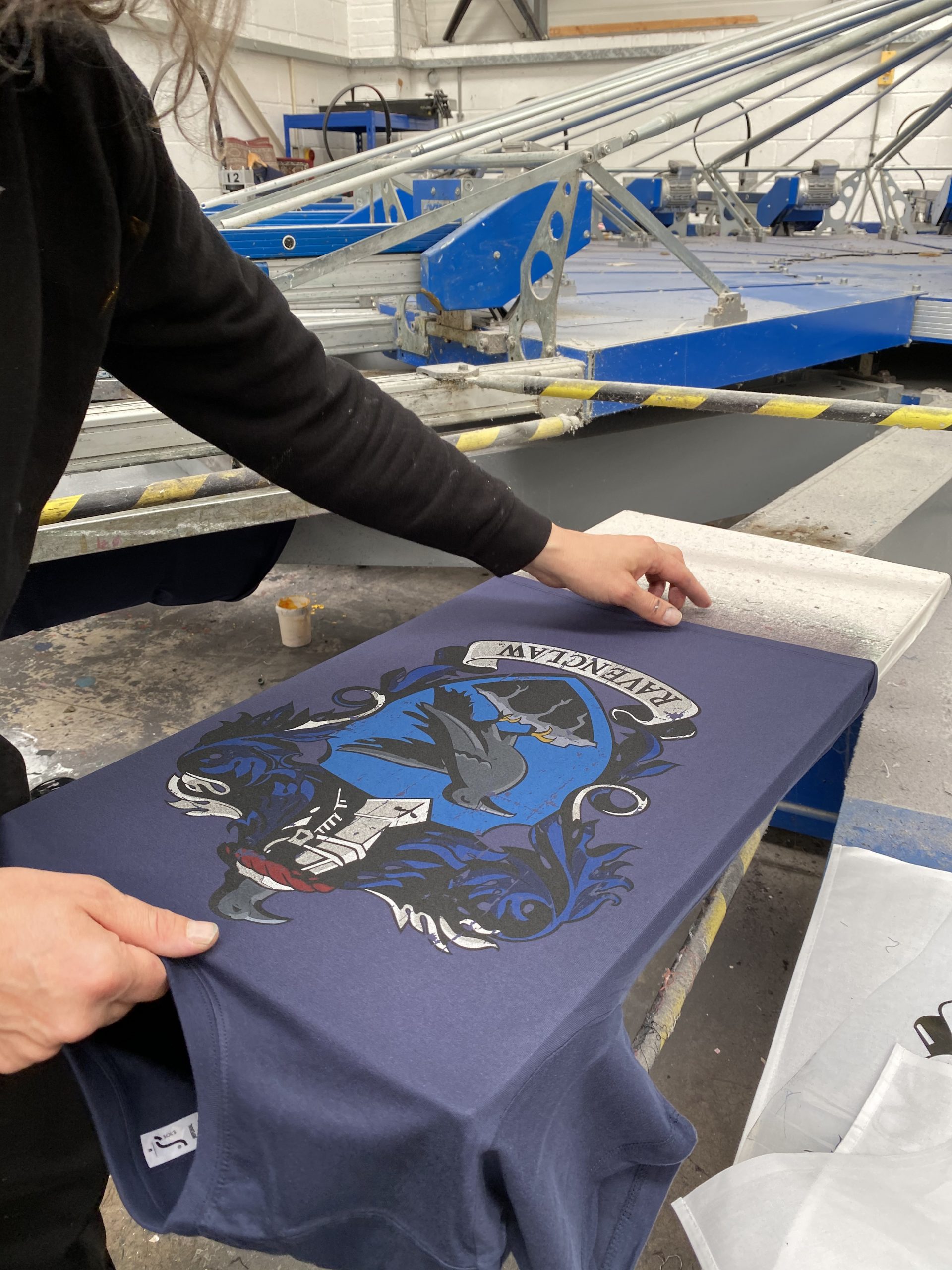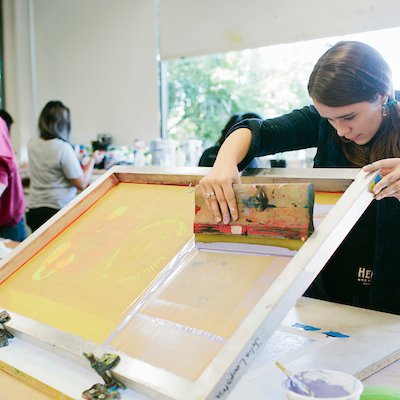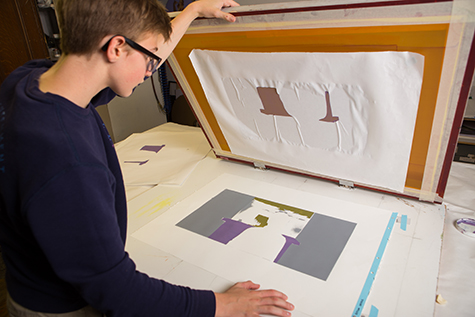ChatGPT said: Everything you should know about 10:9 Design contact for service inquiries
Discover the Numerous Sorts Of Screen Printing Techniques for Your Next Job
Screen printing offers a diverse series of strategies that can improve any kind of imaginative job. From standard techniques like serigraphy to modern-day developments such as direct-to-garment printing, each method has its unique advantages. Specialty options, including environmentally friendly and metal inks, introduce much more opportunities. Comprehending these techniques can substantially affect the last result. The challenge exists in selecting the most ideal technique for specific requirements and desired results. What variables should one think about?

The Basics of Screen Printing
Screen printing might appear complex, it is essentially an uncomplicated process that includes transferring ink via a mesh screen onto various surface areas. The method starts with the production of a stencil, which defines the style to be printed. This pattern is affixed to a mesh screen, usually constructed from polyester or nylon. Once the stencil is in area, ink is put on the screen and pressed through the mesh making use of a squeegee, leading to the preferred pattern being published on the underlying product.
Screen printing can be carried out on a large range of substrates, consisting of textile, plastic, and paper, making it a functional choice for various projects. The procedure enables intricate layouts and vivid shades, making it preferred in industries such as advertising and marketing, art, and fashion. Recognizing these essentials furnishes individuals with the foundational expertise called for to check out advanced techniques in screen printing.
Traditional Screen Printing Techniques
Typical screen printing methods have been used for centuries, maintaining the craftsmanship and artistry of this approach. This method utilizes a mesh screen to transfer ink onto a substrate, such as fabric or paper, enabling long-lasting and dynamic designs. The process starts with creating a pattern, which blocks particular areas of the screen to control where the ink will certainly be applied.
One prominent strategy is serigraphy, typically made use of for creative prints and limited editions. One more is using water-based inks, which are eco-friendly and offer a soft feeling on fabrics - 10:9 Design LLC Company. Furthermore, typical approaches can include manual printing, where artisans apply ink with a squeegee, guaranteeing accuracy and focus to information
These methods remain valued in the sector for their tactile quality and the unique textures they create, appealing to both makers and consumers that value the heritage of screen printing.
Digital Screen Printing Innovations
As the need for faster manufacturing and modification in the printing sector has risen, electronic screen printing innovations have actually become a game-changer. This technology blends conventional screen printing techniques with digital processes, enabling rapid prototyping and intricate designs that were previously challenging to achieve. One significant advancement is the introduction of direct-to-garment (DTG) printing, which promotes premium, full-color prints on various fabrics without the requirement for screens. Additionally, innovations in ink solutions have actually resulted in environment-friendly choices that maintain vibrant shades while decreasing environmental effect. Making use of automated systems better improves production, decreasing labor expenses and improving accuracy. These technologies not just deal with tiny batch orders and tailored layouts yet also allow for quicker turnaround times, making them suitable for companies concentrated on conference client needs in a hectic market. Digital screen printing, consequently, stands for an essential development in the domain name of printing strategies.
Specialty Screen Printing Techniques
Discovering specialized screen printing methods exposes a diverse range of methods that push the limits of creativity and capability in the printing market. Among these, glow-in-the-dark inks provide a distinct visual effect, making layouts come active in low-light conditions. Metallic inks, understood for their sparkling coating, include a touch of luxury to published products. Another innovative technique is discharge printing, which removes dye from the textile rather of adding ink, resulting in a soft, classic feel. High-density printing produces an increased structure externally, improving responsive involvement. In addition, water-based inks are getting popularity for their vivid shades and reduced ecological impact. Each of these specialized methods deals with particular design requirements, making it possible for brand names and musicians to develop standout items that reverberate with their audiences. By leveraging these methods, services can raise their screen printing projects to brand-new heights, making certain unforgettable impressions.
Eco-Friendly Screen Printing Options
Environment-friendly screen printing options are acquiring grip as the market moves towards sustainability. Lasting ink selections and the use of biodegradable products are crucial parts in lowering the environmental impact of the printing process. By taking on these techniques, screen printers can add to an extra lasting future while preserving premium results.
Lasting Ink Choices

Biodegradable Materials Use
As the screen printing industry advances, the unification of naturally degradable materials is ending up being progressively essential for environmentally aware methods. Suppliers and developers are now exploring inks and substratums made from all-natural, eco-friendly resources that decay much more effectively than traditional counterparts. These biodegradable choices minimize plastic waste and decrease ecological impact, lining up with the expanding need for lasting items.
Usual examples consist of water-based inks and organic cotton textiles, both of which decrease dangerous chemicals and promote eco-friendliness. Brands that take on these products commonly boost their market charm, attracting consumers who prioritize sustainability. As awareness of ecological concerns remains to rise, the shift towards biodegradable materials in screen printing is likely to obtain energy, cultivating a greener sector standard.
Selecting the Right Method for Your Task
How can one identify the most suitable screen printing technique for a particular project? The decision rests on a number of elements, including the product to be printed on, the intricacy of the style, and the wanted manufacturing quantity - 10:9 Design Screen Printing. For instance, direct-to-garment printing is excellent for intricate layouts with numerous colors, while traditional screen printing excels for bigger runs of easier graphics
Additionally, factor to consider of the end-use of the printed thing is necessary. For outside applications, methods that offer sturdiness and climate resistance, such as plastisol ink, might be chosen. Conversely, environmentally-conscious projects might benefit from water-based inks or biodegradable products.
Eventually, recognizing the job's unique needs permits for an enlightened selection, making sure both aesthetic allure and functional durability. By reviewing style intricacy, material compatibility, and production range, one can efficiently pick one of the most proper screen printing strategy to meet their project's goals.
Often Asked Questions
What Is the History of Screen Printing?
Screen printing stemmed in click here ancient China around 1000 ADVERTISEMENT, evolving via Japan and Europe. By the 20th century, it became popular in commercial art and fashion, reinventing exactly how layouts were created and dispersed globally.

Exactly how Do I Prepare Artwork for Screen Printing?
To prepare art work for screen printing, one need to ensure high resolution, utilize an appropriate shade setting, create separate layers for every color, and convert text to details, assuring compatibility with the printing process and preferred outcome.
What Products Are Ideal for Screen Printing?
The finest materials for screen printing consist of premium inks, durable displays, and ideal substrates like cotton, polyester, or blends. Furthermore, utilizing suitable solution and squeegees can improve the printing procedure and final results.
Can I Evaluate Publish in your home?
Yes, screen printing in your home is feasible. With the best materials, configuration, and methods, individuals can create premium prints. However, mindful consideration of work area and devices is necessary for successful results.

What Are Common Blunders in Screen Printing?
Typical mistakes in screen printing include improper exposure times, inadequate ink consistency, imbalance of screens, not enough cleaning of materials, and ignoring to check prints. These mistakes can compromise the quality and accuracy of the end product.
Screen printing may appear complex, it is fundamentally an uncomplicated procedure that includes transferring ink via a mesh screen onto different surfaces. As the demand for faster production and personalization in the printing sector has risen, digital screen printing developments have arised as a game-changer. Discovering specialized screen printing approaches exposes a varied range of methods that push the boundaries of creative thinking and functionality in the printing sector. The ideal materials for screen printing consist of top quality inks, resilient displays, and ideal substratums like cotton, polyester, or blends (10:9 Design LLC Company). Common errors in screen printing consist of improper direct exposure times, inadequate ink uniformity, imbalance of displays, insufficient cleaning of products, and ignoring to examine prints